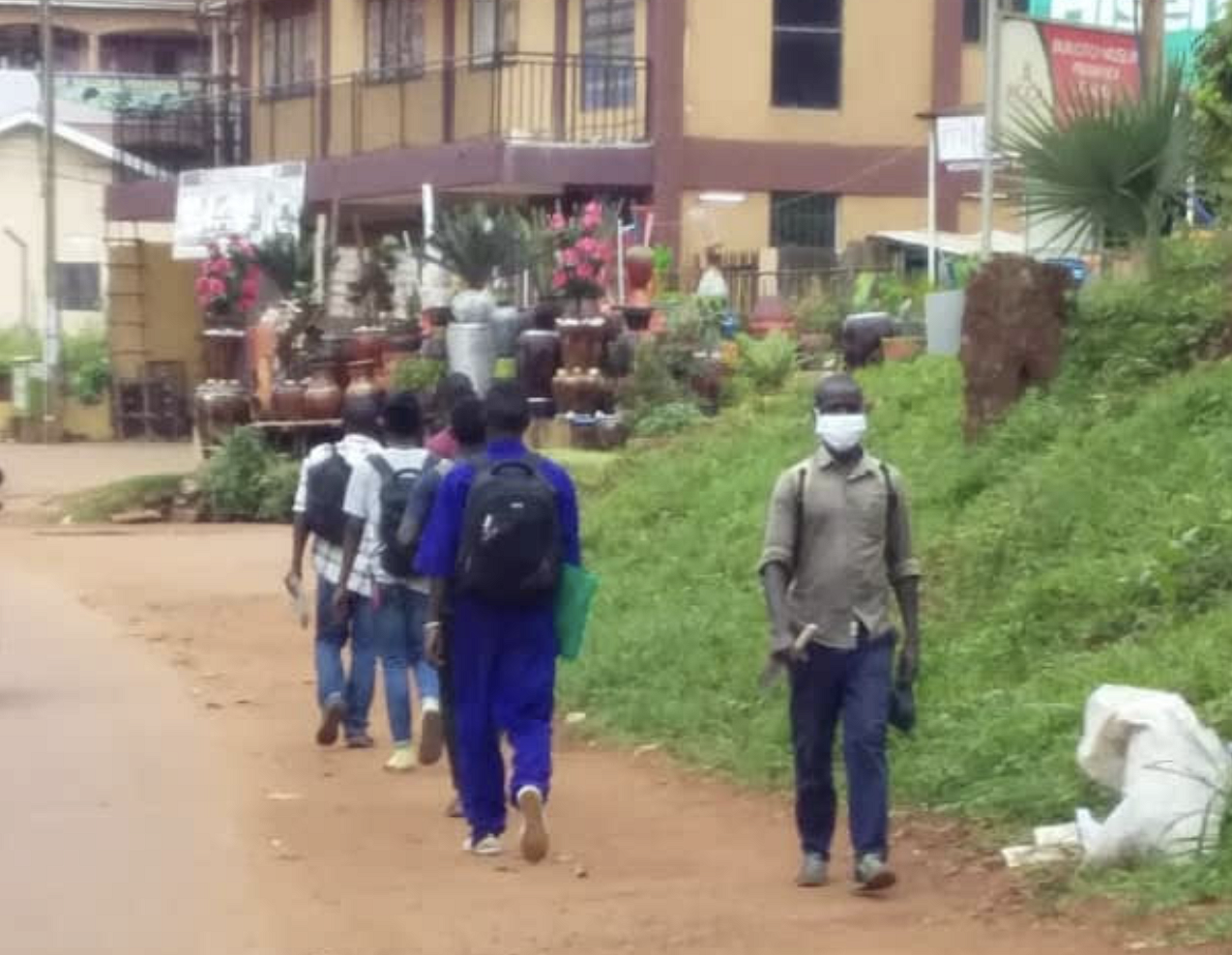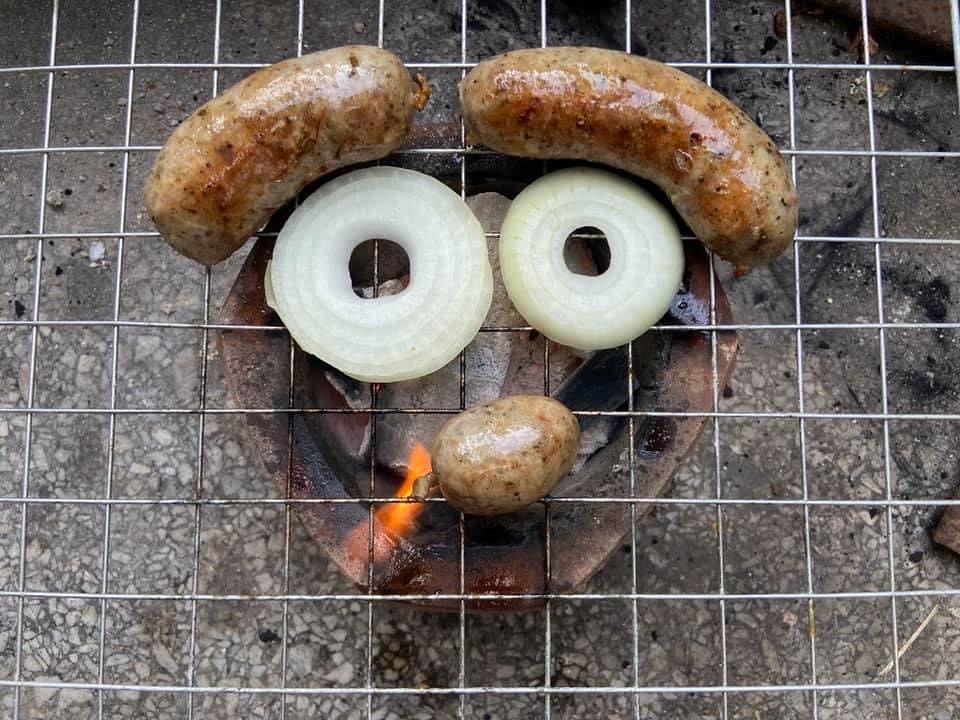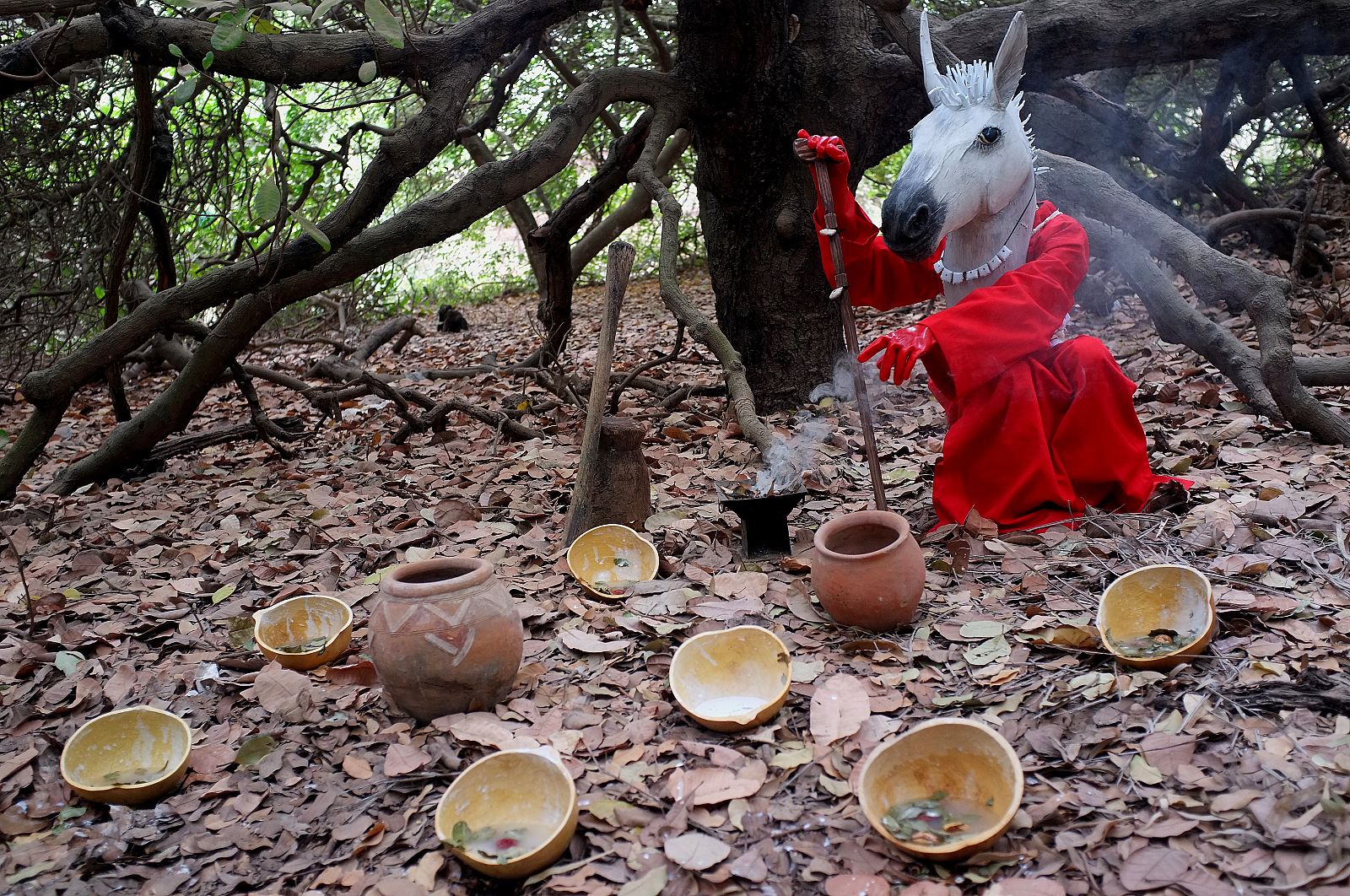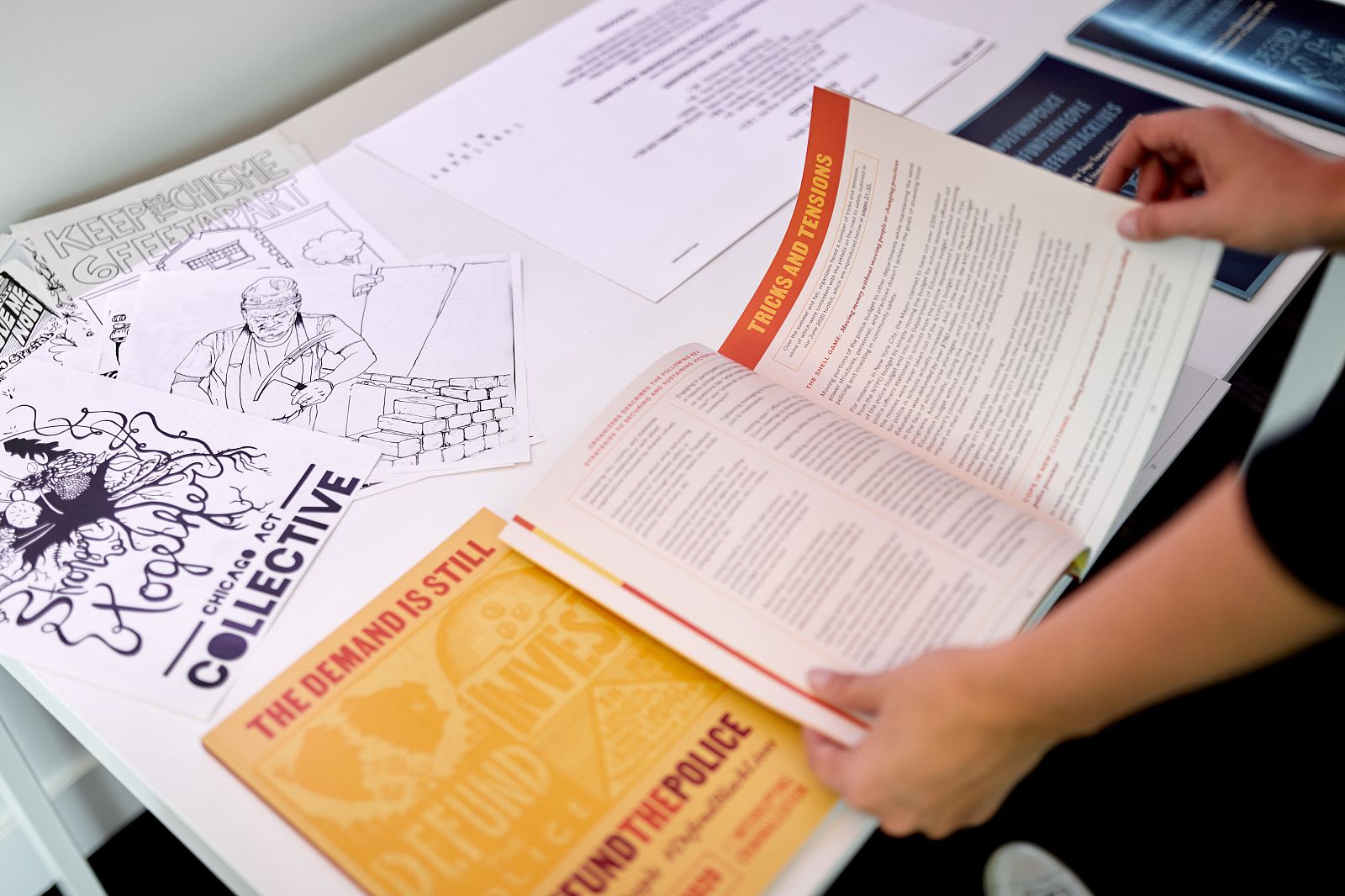Reports from the Field are perspectives from curators from around the world, who are alumni of the Curatorial Intensive, ICI's professional development program for emerging curators. The commissioned texts are reflections on the impact of the global pandemic on their lives, ways of working, their communities, and how they are adapting as a response.
Fadzai Muchemwa, Alumna of the Curatorial Intensive Dakar '16, writes from Harare, Zimbabwe. To read and download the PDF version, click here.
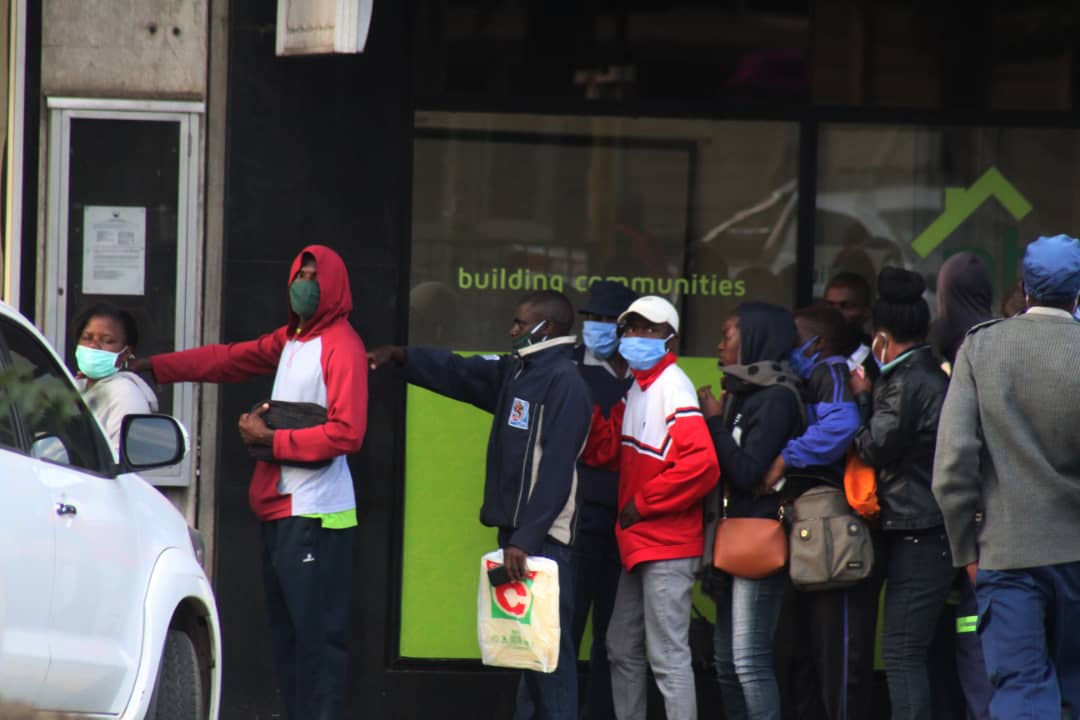
Physical distancing in an unending queue. Photograph courtesy of Panashe Makufa
I have been curating public programs (talks, lectures, etc.), running an art school, as well as the school’s learning program at the National Gallery of Zimbabwe for the past two and a half years. I started off the year feeling especially motivated. I finished an inspiring curatorial residency at the Bag Factory Artists’ Studios in Johannesburg at the end of 2019 and was getting ready to move to Makhanda for my Master’s Degree in Art History at Rhodes University. News of COVID-19 and the impact it might have on my personal life and work were the last things on my mind.
To wind up my time at the National Gallery of Zimbabwe, I had lined up quite a number of interesting talks, readings, performances, and screenings. When the National Gallery closed its doors to the public on March 13, it had been due to a warning against large gatherings and the government had given us the directive to close. Quite naturally shutting down meant no gallery programming. School group tours booked months in advance, with painstaking work, as well as all programming including exhibitions that were set to open within days, had to be canceled. Suddenly, instead of spending the day welcoming groups for tours, workshops, and planning events, we were left with a lot of unimplemented programs, which tanked the morale of the department. We have always delivered our programs to audiences directly, physically, and it was only recently that we started uploading recordings of talks online. We had not really kept track of the impact of these uploads, however. While in Johannesburg last year, I had experienced a different kind of self-isolation and I was not ready for more so soon.
We were eventually asked to stop coming into work when we had the first COVID-19 death in the country. Zimbabwe went into total lockdown on March 30. I struggled quite a lot to adjust to our new reality and to stay inside all the time coping with (mis)information overload. I found it increasingly difficult to get any work done, and I soon had to start working on my Master’s and attending seminars on Zoom. The constant message of social distancing increased my anxiety and fear. Twitter and WhatsApp became the sites of all my fears with a deluge of information that was hard to process and make sense of. It was so intense that two weeks into the lockdown I had to take a mental health week to regroup and prioritize my psychological well being. I started a conversation with the artist, Gladys Kalichini, which became an interview. The month-long emails, calls, and WhatsApp messages on practice and ideology became a form of self-care in the face of real and valid fears. Zoe Samudzi, on one of her Instagram stories, pointed to an app for yoga called Down Dog, which could help with practice from home as I could not have my normal class. This meant my children could also participate and would be out of my sister’s and my hair for part of the day.
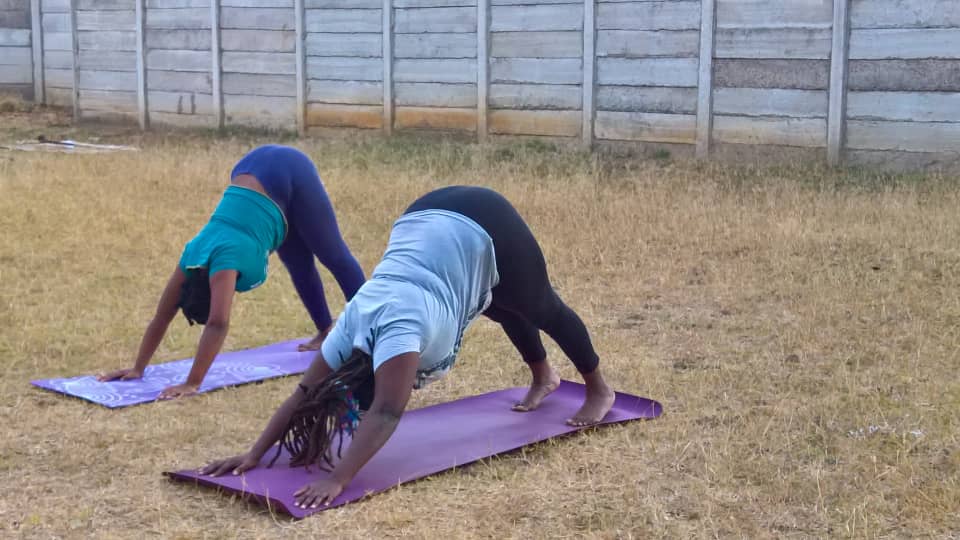
Yoga in the evening. Photograph Courtesy of Fadzai Muchemwa
I have had to think of finding ways of engaging and adjusting to this new normal. Because museums are not considered essential services in emergency situations we could not come into work. Mental health, well-being, and social change through work during these very stressful times have been at the forefront of engagement with the public. Curating in fragile democracies where information is mostly disseminated by rumors and half-truths, without much information and communication technology infrastructure for the greater part of the population. It is difficult enough without having to deal with a global pandemic as well.
Working for a big institution such as the National Gallery remotely has also been hard; not everyone in the team has home internet access and phone data has become prohibitively expensive. Other smaller art spaces that have more room to maneuver have been using Facebook Live to remain engaged. For example, Enthuse Afrika has been having ‘Live from Home’ sessions, which include concerts and discussions on how businesses stay afloat during uncertain times. Newspapers have created digital editions that are small enough to be shared on WhatsApp for a weekly fee that is even more affordable than the print edition.
WhatsApp, which was meant to function as the inexpensive alternative outlet from the beginning, has been a particularly distressing platform for me because of the constant reminders that many are not taking the virus seriously. But it also became a digital site for the National Gallery that I miss. I have found a supportive community in the Arts of Africa and the Global South’s research group at Rhodes University. Fellows from the British Museum International Training program have been sharing resources on how to cope and how to effectively work cutting out all the noise. A friend, Luciara Ribeiro, Assistant curator at the Tomie Ohtake Institute in Brazil, is working to reorganize the activities of the institute. She has asked me to participate in their #togetheraway initiative which is quite informal but also quite serious considering the subject of coping with lack of physical community in the midst of a global pandemic that requires social distancing. This has kept me busy and made me think of new ways of being together even though we are now a little bit further away.
I have found communities of cultural practitioners and educators who are quite set on encouraging each other to keep working and find comfort in art. They have been sharing images of artworks that they are working on, as well as calls for participation and calls for support during the lockdown. I have found temporary spaces and temporary communities where even though nature is unpredictable and variable, and that though the world remains uncertain, art has brought us together even while we have to be apart.
The Zimbabwean government has not been forthcoming in the support of artists during this period that they are not making money. The government and the National Arts Council have asked artists to register for welfare support and an Economic Recovery and Stimulus package. Both of them have yet to do anything in this regard. Granted, Zimbabwe has been in economic freefall for a number of years and the healthcare system is in a dire state. The private sector is focusing on ensuring the nation stays healthy and cultural practitioners are the least of their worries. The information blackout, as well as movement restrictions, make it impossible to correctly identify how this has affected the general population. But it has shown glaring gaps in terms of privilege and lack. It is important to think of how to navigate this space where artists and cultural practitioners continue to work and have an infrastructure that supports their welfare.
It’s not possible to define what the world of cultural work will look like post-pandemic but the world of work and engagement will change. It might be difficult to envision the world we know is possible on the other side of the pandemic, but if artworks from centuries past that we still admire are any indication, art is a testament to our resilience and cultural organizations should explore how to turn real estate into ‘unreal’ estate – remote access.
I am still exploring how this pandemic impacts my work, sanity, and family life. This has been a meaningful time for me to affect the changes that I need to make to how I work and deal with end-of-the-world-as-we-know-it situations.
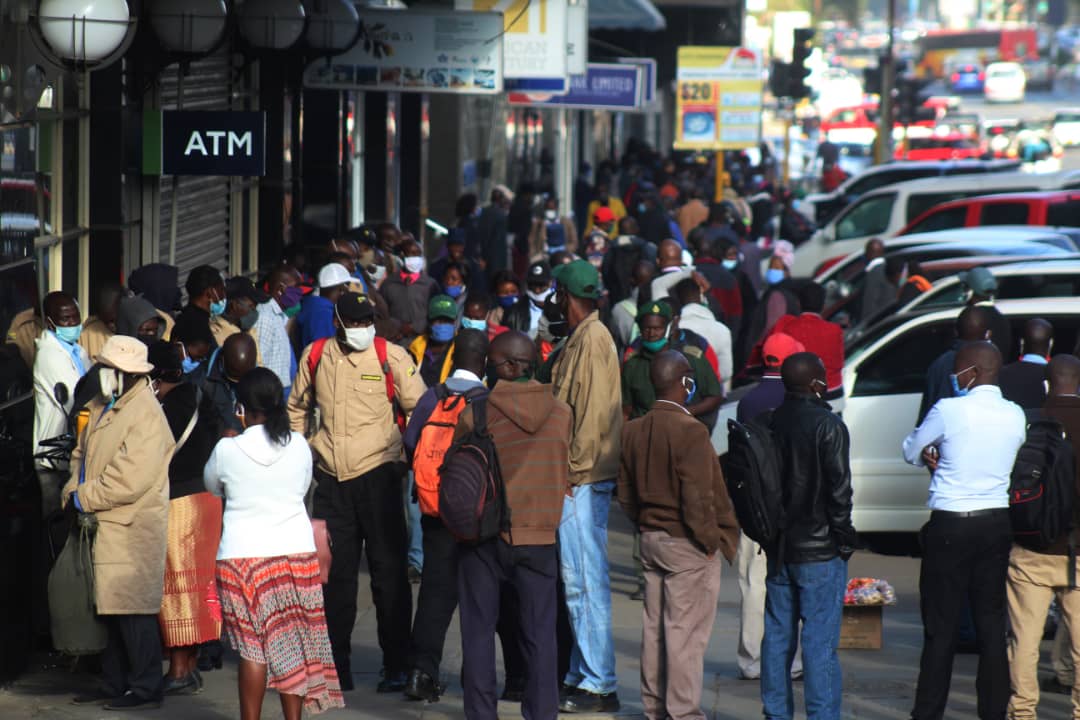
Queuing for cash in Harare. Photograph courtesy of Panashe Makufa




